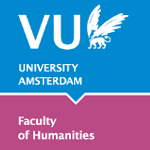
|
Digital Humanities Workbench |
Home page > Digital data > Digital text > Types Types of digitized text filesThis section discusses a number of different types of text files, with special attention to how they can be used in humanities research. Each type is accompanied by one or more examples.
Basic typesDigital facsimileA facsimile is a replica of a manuscript or (old) print. A digital facsimile is an image file, not a text file.
E-text
Special typesEnhanced e-textIn this workbench, the term enhanced e-text refers to a digitized text containing additional features for the purpose of presentation or analysis. This is a kind of e-text plus.
Critical edition
E-books and audiobooks Note: For any text to be usable in an academic context, the provenance of the work must be known, as well as which edition of the original text it is. |
Other topics in this section: Introduction Digital facsimile E-text Enhanced e-text Critical edition E-books and audiobooks |
